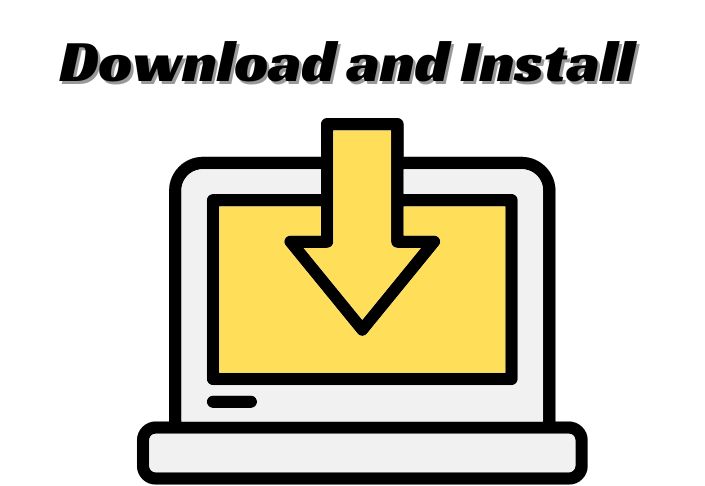In today’s rapidly evolving healthcare environment, technology plays a pivotal role in transforming the way healthcare services are delivered. Whether you’re a healthcare provider looking to streamline operations, improve patient outcomes, or simply provide greater convenience to your patients, developing a healthcare app for your practice could be an excellent solution. A well-designed app can enhance communication, provide valuable health insights, manage patient information securely, and increase the efficiency of your practice.
But how do you move from the concept of an app to its development and eventual launch? This article will guide you through the entire process of creating a healthcare app—from the initial idea to the final product. By the end, you’ll have a clear understanding of what it takes to develop a successful healthcare app, and why professional services like those offered by Zenesys can be invaluable in this journey.
Why You Should Develop a Healthcare App for Your Practice
As the world becomes increasingly digitized, healthcare practices need to adapt to the new technological landscape. A healthcare app is not just a luxury anymore; it has become an essential tool for improving the patient experience, enhancing operational efficiency, and ensuring that both patients and healthcare providers can meet their needs in a fast-paced, digital world.
Here are a few compelling reasons why you should consider developing an app for your healthcare practice:
1. Improved Patient Experience
Healthcare apps offer patients an easy way to access their health information, make appointments, get prescriptions, and communicate with their doctors. By giving patients the ability to manage their health more effectively, you not only improve their experience but also foster greater patient satisfaction.
2. Better Communication Between Patients and Healthcare Providers
With a dedicated healthcare app, patients can directly communicate with their healthcare provider through secure messaging. This helps eliminate misunderstandings and ensures that the communication is always clear. For healthcare providers, it allows for quicker responses and follow-ups, enhancing the quality of care.
3. Streamlined Operations
Managing patient data, scheduling appointments, and handling prescriptions can be time-consuming. A healthcare app can automate many of these tasks, reducing administrative burdens. This enables staff to focus more on patient care rather than paperwork, which can boost overall practice efficiency.
4. Increased Accessibility
Patients can access their healthcare information at any time, which is especially useful for those with busy schedules. From booking appointments to checking lab results, a healthcare app provides easy and instant access to all the services your practice offers.
5. Data Security and Privacy
One of the most crucial aspects of healthcare is the handling of sensitive patient data. Healthcare apps are designed with the necessary security protocols, such as encryption and secure login features, to ensure that patient information remains protected.
How to Develop a Healthcare App for Your Practice
Developing a healthcare app requires careful planning, thoughtful design, and technical expertise. Below, we break down the entire process into a series of steps that will guide you from concept to reality. Whether you’re developing the app in-house or working with a professional software development team, following these steps will help ensure that your app meets the needs of your practice and your patients.
1. Define Your App’s Purpose
Before you even think about the design or the technical features, you need to clearly define the purpose of your app. Why do you need this app? What problem are you trying to solve? Are you aiming to streamline patient communication, simplify appointment scheduling, track patient health, or something else?
Your goals will guide the design and functionality of your app. For example, if your goal is to enhance communication, you may need features like in-app messaging, appointment reminders, and video consultations. If the goal is to track patient health, you’ll need features like fitness tracking, medication reminders, and integration with wearable devices.
2. Identify Your Target Audience
Your app’s design and functionality will depend on who your target audience is. Is your app for general patients, elderly patients, or individuals with specific medical conditions? Understanding the demographics and needs of your users will help you create an app that offers real value.
For example, an app designed for elderly patients might have large text and simplified navigation. On the other hand, a fitness tracking app for younger patients might require more advanced features like data analysis and integration with other health devices.
3. Choose the Right Features
Once you have a clear purpose and understanding of your audience, you can begin to choose the features your app should have. The key is to create an app that provides value to both your patients and your practice while remaining simple to use.
Common features of healthcare apps include:
- Appointment Scheduling: Allow patients to book, reschedule, or cancel appointments with ease.
- Electronic Health Records (EHR): Patients can access their medical history, lab results, and prescriptions.
- Telemedicine: Enable video consultations or virtual visits to save time and improve accessibility.
- Medication Reminders: Help patients track their medications and ensure they take them on time.
- Patient Education: Provide resources such as articles, videos, and tips to help patients better manage their health.
- Secure Messaging: Allow patients and healthcare providers to communicate securely within the app.
It’s important to prioritize the most critical features based on your specific needs and the type of practice you run.
4. Choose the Right Development Approach
There are two primary approaches to developing a healthcare app:
- Native Development: This involves creating a separate app for each platform (e.g., one for iOS and another for Android). Native apps typically offer the best performance and user experience but can be more expensive and time-consuming to develop.
- Cross-Platform Development: This approach uses a single codebase that can run on multiple platforms, such as iOS and Android. It’s usually more cost-effective and quicker to develop, but it might not offer the same level of performance as a native app.
You’ll need to consider your budget, timeline, and the features you want before deciding which approach is best for your app.
5. Design the User Interface (UI)
A user-friendly design is crucial for any healthcare app. The goal is to make sure that users—whether they are patients or healthcare providers—can easily navigate the app without confusion.
Consider these principles when designing your app:
- Simplicity: Avoid clutter and unnecessary complexity. Focus on the most important features and make them easy to access.
- Accessibility: Make sure the design accommodates all users, including those with visual or physical impairments. Use large text, clear buttons, and simple navigation.
- Branding: Ensure that the design aligns with your practice’s brand, including colors, fonts, and logos. Consistency is key to building trust with your users.
6. Develop the Backend Infrastructure
While the user interface is what your patients will interact with, the backend infrastructure is equally important. This is the part of the app that handles data processing, storage, and security.
Your app’s backend should include:
- A secure database: To store patient information, appointments, medical records, etc.
- API integrations: To connect your app with other systems, such as electronic health record (EHR) systems, third-party services, and wearable devices.
- Security protocols: To protect patient data through encryption, multi-factor authentication, and other security measures.
7. Test the App Thoroughly
Testing is one of the most important phases in app development. You need to ensure that your app is free from bugs, functional errors, and security vulnerabilities.
Key areas to focus on during testing include:
- Functionality testing: Make sure all features work as expected.
- Usability testing: Ensure the app is intuitive and easy to use.
- Security testing: Verify that sensitive data is protected and secure.
- Performance testing: Check that the app performs well under heavy usage.
8. Launch and Gather Feedback
After thorough testing, you can launch your app. However, the development process doesn’t end there. After launching the app, it’s important to gather feedback from your users. This will help you identify any areas that need improvement and allow you to release updates that enhance the user experience.
9. Provide Ongoing Maintenance and Updates
Healthcare apps require regular maintenance and updates to stay current with new technologies, comply with changing regulations, and address user feedback. Make sure you have a plan in place for ongoing app support.
Why Professional Healthcare App Development Services Are Important
While developing a healthcare app might seem straightforward, it’s a complex process that involves specialized knowledge, particularly in areas like healthcare regulations, data security, and system integrations. This is where professional healthcare software development services can play a vital role.
Working with a professional team, like Zenesys, ensures that your app is developed according to the highest standards. They have the expertise to handle everything from design and development to deployment and ongoing support. Zenesys offers custom solutions tailored to your practice’s specific needs, ensuring that your app not only meets the demands of your patients but also adheres to industry regulations and security standards.
Conclusion
Developing a healthcare app for your practice can significantly improve the way you interact with your patients, streamline operations, and provide better care. By following a structured development process—from defining your goals and choosing the right features to testing and launching the app—you can turn your vision into a reality.
However, creating an effective and secure healthcare app requires a combination of technical expertise and healthcare industry knowledge. Partnering with a professional software development team like Zenesys can help you navigate the complexities of app development, ensuring that your healthcare app is both functional and compliant with relevant regulations.
If you’re ready to take the next step in transforming your practice with a healthcare app, consider reaching out to Zenesys for professional guidance and services. Let them help you bring your idea to life and take your practice to the next level.




